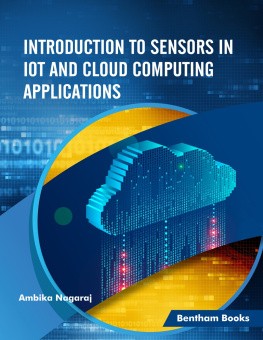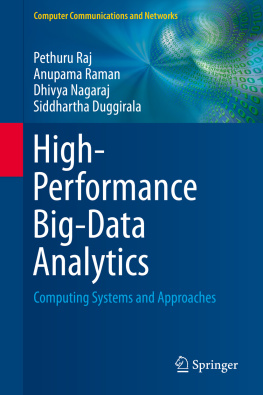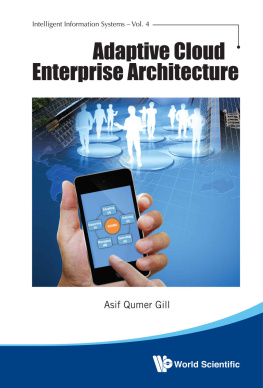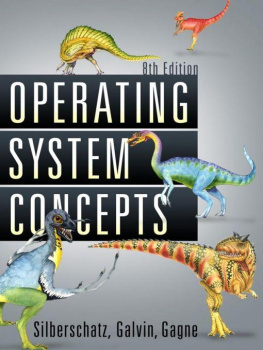About This eBook
ePUB is an open, industry-standard format for eBooks. However, support of ePUB and its many features varies across reading devices and applications. Use your device or app settings to customize the presentation to your liking. Settings that you can customize often include font, font size, single or double column, landscape or portrait mode, and figures that you can click or tap to enlarge. For additional information about the settings and features on your reading device or app, visit the device manufacturers Web site.
Many titles include programming code or configuration examples. To optimize the presentation of these elements, view the eBook in single-column, landscape mode and adjust the font size to the smallest setting. In addition to presenting code and configurations in the reflowable text format, we have included images of the code that mimic the presentation found in the print book; therefore, where the reflowable format may compromise the presentation of the code listing, you will see a Click here to view code image link. Click the link to view the print-fidelity code image. To return to the previous page viewed, click the Back button on your device or app.
Systems Performance
Enterprise and the Cloud
Brendan Gregg

Upper Saddle River, NJ Boston Indianapolis San Francisco
New York Toronto Montreal London Munich Paris Madrid
Capetown Sydney Tokyo Singapore Mexico City
Many of the designations used by manufacturers and sellers to distinguish their products are claimed as trademarks. Where those designations appear in this book, and the publisher was aware of a trademark claim, the designations have been printed with initial capital letters or in all capitals.
The author and publisher have taken care in the preparation of this book, but make no expressed or implied warranty of any kind and assume no responsibility for errors or omissions. No liability is assumed for incidental or consequential damages in connection with or arising out of the use of the information or programs contained herein.
The publisher offers excellent discounts on this book when ordered in quantity for bulk purchases or special sales, which may include electronic versions and/or custom covers and content particular to your business, training goals, marketing focus, and branding interests. For more information, please contact:
U.S. Corporate and Government Sales
(800) 382-3419
For sales outside the United States, please contact:
International Sales
Visit us on the Web: informit.com/ph
Library of Congress Cataloging-in-Publication Data
Gregg, Brendan.
Systems performance : enterprise and the cloud / Brendan Gregg.
pages cm
Includes bibliographical references and index.
ISBN-13: 978-0-13-339009-4 (alkaline paper)
ISBN-10: 0-13-339009-8 (alkaline paper)
1. Operating systems (Computers)Evaluation. 2. Application softwareEvaluation. 3. Business
EnterprisesData processing. 4. Cloud computing. I. Title.
QA76.77.G74 2014
004.6782dc23
2013031887
Copyright 2014 Brendan Gregg
All rights reserved. Printed in the United States of America. This publication is protected by copyright, and permission must be obtained from the publisher prior to any prohibited reproduction, storage in a retrieval system, or transmission in any form or by any means, electronic, mechanical, photocopying, recording, or likewise. To obtain permission to use material from this work, please submit a written request to Pearson Education, Inc., Permissions Department, One Lake Street, Upper Saddle River, New Jersey 07458, or you may fax your request to (201) 236-3290.
ISBN-13: 978-0-13-339009-4
ISBN-10: 0-13-339009-8
Text printed in the United States of America.
5 16
Preface
There are known knowns; there are things we know we know. We also know there are known unknowns; that is to say we know there are some things we do not know. But there are also unknown unknownsthere are things we do not know we dont know.
U.S. Secretary of Defense Donald Rumsfeld, February 12, 2002
While the above statement was met with chuckles from those attending the press briefing, it summarizes an important principle that is as relevant in complex technical systems as it is in geopolitics: performance issues can originate from anywhere, including areas of the system that you know nothing about and are therefore not checking (the unknown-unknowns). This book may reveal many of these areas, while providing methodologies and tools for their analysis.
About This Book
Welcome to Systems Performance: Enterprise and the Cloud! This book is about the performance of operating systems and of applications from operating system context, and it is written for both enterprise and cloud computing environments. My aim is to help you get the most out of your systems.
When working with application software that is under constant development, you may be tempted to think of operating system performancewhere the kernel has been developed and tuned for decadesas a solved problem. It isnt! The operating system is a complex body of software, managing a variety of ever-changing physical devices with new and different application workloads. The kernels are also in constant development, with features being added to improve the performance of particular workloads, and newly encountered bottlenecks being removed as systems continue to scale. Analyzing and working to improve the performance of the operating system is an ongoing task that should lead to continual performance improvements. Application performance can also be analyzed in the operating system context; Ill cover that here as well.
Operating System Coverage
The main focus of this book is the study of systems performance, with tools, examples, and tunable parameters from Linux- and Solaris-based operating systems used as examples. Unless noted, the specific distribution of an operating system is not important in the examples used. For Linux-based systems, the examples are from a variety of bare-metal systems and virtualized cloud tenants, running either Ubuntu, Fedora, or CentOS. For Solaris-based systems, the examples are also either bare-metal or virtualized and are from either Joyent SmartOS or OmniTI OmniOS. SmartOS and OmniOS use the open-source illumos kernel: the active fork of the OpenSolaris kernel, which itself was based on the development version of what became Oracle Solaris 11.
Covering two different operating systems provides an additional perspective for each audience, offering a deeper understanding of their characteristics, especially where each OS has taken a different design path. This helps the reader to understand performance more comprehensively, without being limited to a single OS, and to think about operating systems more objectively.
Historically, more performance work has been done for Solaris-based systems, making them the better choice for some examples. The situation for Linux has been greatly improving. When System Performance Tuning [Musumeci 02] was written, over a decade ago, it also addressed both Linux and Solaris but was heavily oriented toward the latter. The author noted reasons for this:
Solaris machines tend to be more focused on performance. I suspect this is because Sun systems are more expensive than their Linux counterparts, on average. As a result, people tend to be a lot more picky about performance, so more work has been done in that area on Solaris. If your Linux box doesnt perform well enough, you can just buy another one and split up the workloadits cheap. If your several-million-dollar Ultra Enterprise 10000 doesnt perform well and your company is losing nontrivial sums of money every minute because of it, you call Sun Service and start demanding answers.












